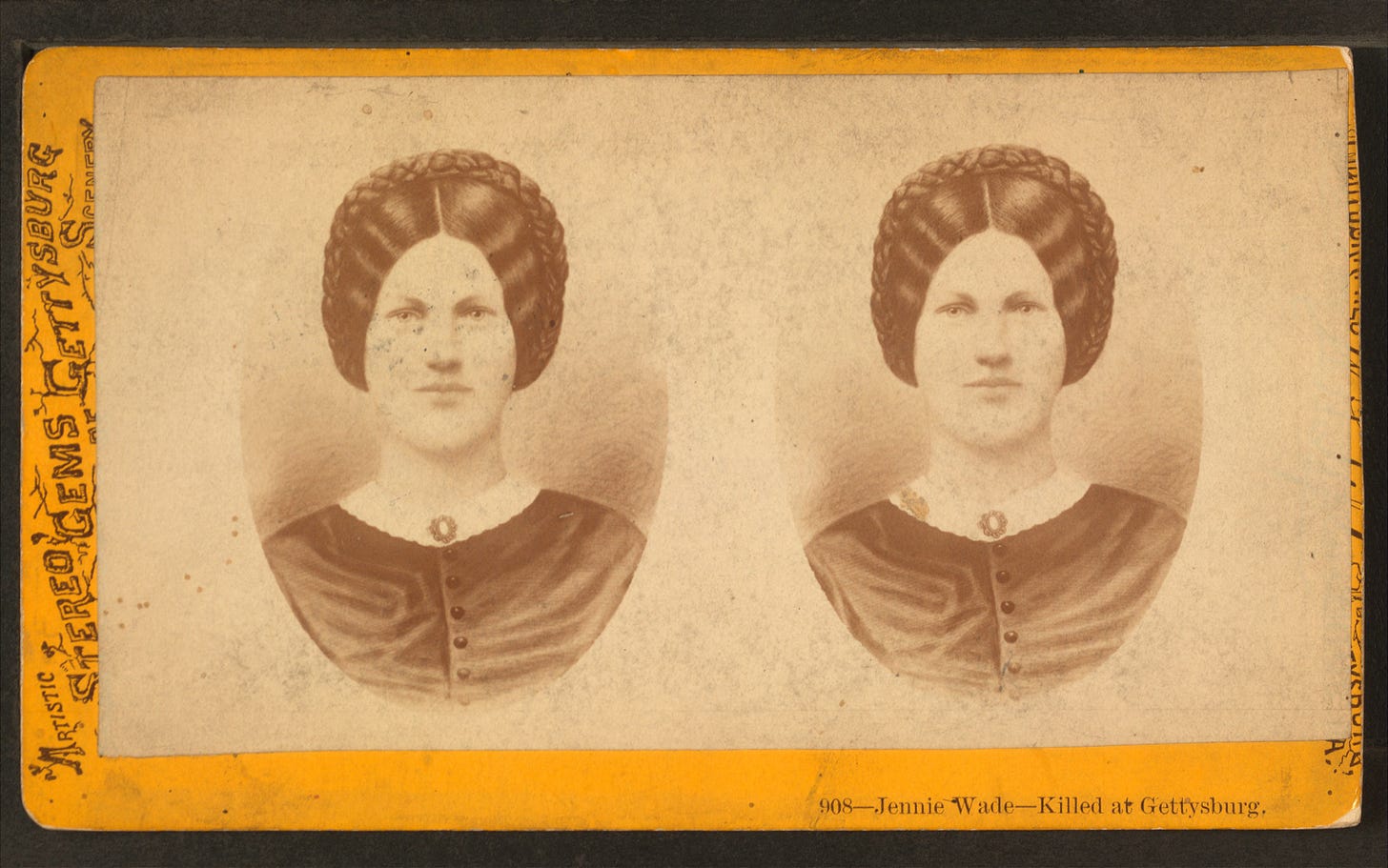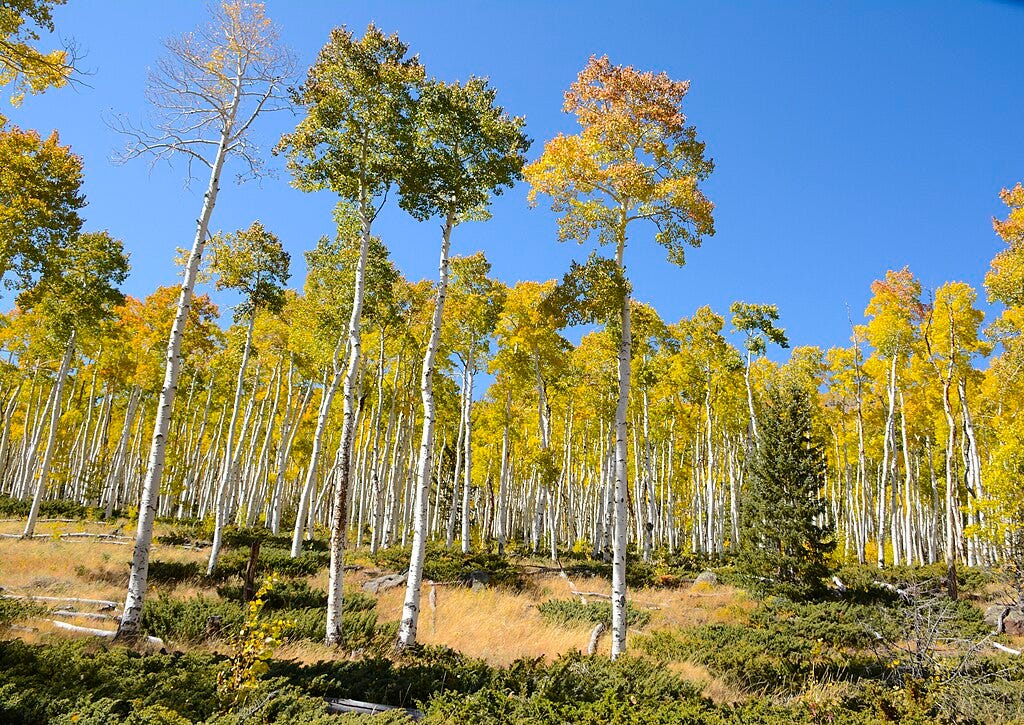Beneath every life
From moss and memory to Gettysburg
If you prefer listening, you can access an audio version of this essay here. ⬆️
Before I’ve finished brushing my teeth, my partner is already outside, crossing the leaf-strewn lawn in his bare feet. Not as leafy as it was before he took the mower to it—recently pushing half a season’s worth of senescence into the hopper and out again into a pile to use as mulch later. He always wants to let the branches finish their disrobing, thinking of the small creatures who discover and bury their sustenance beneath the crinkly carpet, but he never quite manages to wait that long.
Going barefoot is new for him, a deliberate effort to acclimate to the cold that sinks deeper into his bones each year, the way it did into his father’s before him, until eventually sleep required double-layered flannel. But this morning is mild, almost gentle, and when I see him out there I wonder why I stopped regularly putting my own bare feet on the earth. So I join him, moving across the thinning grass to the mossy patches at the edge of the woods.
We take our tender soles to the comfort of green islands, this one soft, that one pillowy. We talk about how they exist as one species in some places but merge into each other in others, how they lack roots in the traditional sense, how they grow on every continent, even Antarctica. While he steadies himself on the slackline, I bend down to look more closely. It fascinates me to consider life at this scale—so much complexity, so much beauty. The mosses rise into tiny spires and fans, miniature forests on miniature hills.
Scale shifts quickly in nature; what’s small under our feet mirrors what stretches across whole landscapes. Far from our little woodline, in Utah’s Fishlake National Forest, the world’s largest known single organism spans 106 acres. Its name is Pando, Latin for “I spread,” and it looks like a forest of individual trees. But in the 1970s, researchers discovered that all 47,000 share the same root system. DNA testing confirmed it: every tree is a clone, genetically identical stems from one, massive quaking aspen.
People drive through, unaware of what they’re witnessing. A highway cuts it in half; deer, elk, and children wander among its trunks. Pando gives the impression of individuality—tree after tree after white-barked tree—but it is one life, one immense and ancient structure, conservatively estimated to be between 9,000 and 16,000 years old.
And yet it is failing. Mature trees are dying with too few sprouts coming along behind them; browsing animals, climate pressures, and disease eliminate them faster than they can be replaced. There is no one known cause, just an accumulation of stresses that leave it struggling to regenerate. Though it lived through the last Ice Age, witnessed the extinction of the giant sloth and the mammoth, stood by during the rise and fall of early human cultures, its future is not guaranteed.
From the vast interconnectedness of one prehistoric organism, I think of a very different experiment in togetherness. A few years before Pando was identified, a Japanese plant ecologist named Akira Miyawaki tried an experiment at a steel plant in the coastal city of Ōita, Japan. He planted a dense patch of native trees on a neglected bit of land. The idea was simple: put many local species shoulder-to-shoulder, an engineered closeness that would spark rapid growth and resilience. It worked. The test plot flourished, and then the approach spread.
Miyawaki Method forests now appear across cities, suburbs, and school campuses—tight, tangled, diverse, astonishingly fast-growing. They reach the height of a young woodland in under a decade. Because the saplings come from local variants and the planting is often done by nearby residents, each forest becomes a community project. A handful of overlooked square feet becomes a habitat, a pocket of air that feels different when you walk through it.
The closer I get to something, the more likely I am to see it differently, to see trees instead of forests, mosses among the leaves. Attention changes how we see the natural world and how we understand history.
On November 19, 1863, President Abraham Lincoln gave a two-minute speech intended to dedicate the site at Gettysburg to a future cemetery for the Union soldiers who died in the brutal three-day battle waged there just four and a half months earlier.
I imagine the town, the ground as it was, the people and the weight of their grief.
A community of only about 2,400 people, Gettysburg is overtaken by nearly 165,000 soldiers. Streets and orchards become battlefields, churches and farmhouses become hospitals, cellars crowd with families as artillery shakes the walls. Pencil writing on wooden boards mark hundreds and hundreds of hastily dug graves, some so shallow that a hard rain unsettles them. The summer air is pungent with the smell of smoke, gunpowder, and fear.
And in the middle of it all, Mary Virginia “Jennie” Wade, a twenty-year old living with her mother and brothers. For safety, and to help care for her five-day-old nephew, Jennie and family move temporarily into her sister Georgia’s home on Baltimore Street.
Jennie spends her days mending uniforms, carrying water, offering food to hungry Union soldiers passing by. On the morning of July 3rd, as she kneads dough for another batch of bread, rifle fire strikes her in the back. She dies instantly, the only civilian lost in this monumental battle.

The next day, when the guns finally fall silent, her mother uses the dough Jennie had been mixing to bake fifteen loaves of bread for the soldiers still moving through the town. The family buries Jennie behind the house on the Fourth of July, also Georgia’s birthday.
And as the past intertwines with the present, the oldest Wade child, Georgia, will eventually live to be 86, passing away in September 1927, just three months before my mother’s birth.
A few nights ago, I read the Gettysburg Address aloud. I’d read it before, of course, but not in a long time, not with the feel of moss so fresh on my feet, the sound of a mother’s cries in my head, the awareness of the “unfinished work” of so many. Beneath every footstep, unseen roots. Beneath every life, a kitchen, a cellar, a pair of dough-covered hands.
~Elizabeth

Now, friends, it’s your time. Nothing inspires me more than your comments. What brings history alive for you? Is there a famous speech that moves you differently now than it did when you first experienced it? I hope you’ll share your reflections and questions, but if you’d rather just sit with these ideas for a while, that’s okay, too.
If anything here resonated, your likes 💚 and shares ♻️ help connect me with more readers like you who care about the details, the lives, and the connections around us.
If you’re curious about the practice of going barefoot, I wrote about it soon after launching Chicken Scratch, in Ground Rules. And a year later I explored moss and forest bathing in Go There.
And as a final offering, I invite you to read—possibly aloud—Lincoln’s famous speech. He was 54 years old at the time. Less than 18 months later, he would be assassinated.
Delivered at Gettysburg, Pa
Nov. 19th 1863.
“Four score and seven years ago our fathers brought forth us,that continent a new nation, conceived in liberty, and dedicated to the proposition that all men are created equal. “Now we are engaged in a great civil war, testing whether that nation, or any nation so conceived and so dedicated, can long endure. We are met on a great battlefield of that war. We have come to dedicate a portion of that field as a final resting place for those who here gave their lives that that nation might live. It is altogether fitting and proper that we should do this. “But in a larger sense we cannot dedicate, we cannot consecrate, we cannot hallow this ground. The brave men, living and dead, who struggled here have consecrated it, far above our poor power to add or detract. The world will little note, nor long remember, what we say here, but it can never forget what they did here. It is for us the living, rather, to be dedicated here to the unfinished work which they who fought here have thus far so nobly advanced. It is rather for us to be here dedicated to the great task remaining before us,that from these honored dead we take increased devotion to that cause for which they gave the last full measure of devotion, that we here highly resolve that these dead shall not have died in vain, that this nation, under God, shall have a new birth of freedom, and that government of the people, by the people, for the people, shall not perish from the earth.”
Until next time, take good care.







